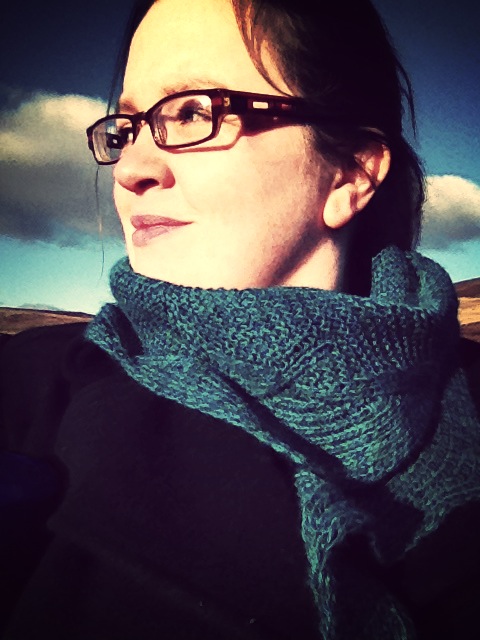I often get asked why I only buy wool from the UK, what it means to me Knit British and what I mean by ‘British’. If I had a mission statement it would go something like this….
For the past few years I have only bought and knitted with wool which has been reared, spun or dyed in Britain. It pains me to say that before this I never even thought about where my wool came from…I was blinded by yarns which fell into the categories of ‘Oooh! Soft!’ or “Oooh! Pretty Colours!’. Then one day I encountered this yarn and realised the sheep that made it were a few fields away.
The idea that I was missing out on something really important kept tugging at me and a few months later I cobbled together the first ideas for Knit British. My eyes were roller-blinded open like a cartoon – we have over 60 breeds of sheep in the UK, what a huge resource of amazing wool. I was quite overwhelmed with the need to experiment and be creative with as much UK bred fibre as possible – including alpaca, mohair and other non-sheepy homegrown fibre.
Knitting British can mean buying wool the provenance, process and finishing of which is UK based only. To me it also means supporting ALL the ways and means of producing yarn in this country. I buy and shout about British bred fibre yarn and I hope by doing so I will be not only do a good turn in helping to maintain the flock, but also bring the wool and yarn to the attention of others who might do the same, particularly rare breeds and those which are at risk.
Britain has a long heritage of spinning and textile mills and I am happy to extend my remit to knit with any wool spun in UK mills. Many long established British spinning and textile mills struggle to keep yarn production going in this country and fight to keep their heads above water facing stiff competition from global competitors. Let’s not forget those who operate small scale set ups too.

Happy am I to knit from farm to yarn and I’m also happy to knit with wool like Rowan tweed , which has been sourced outside the British isles, but has been spun using a traditional method developed by a UK mill. I do think about wool miles, but I also want to help support jobs in the industry in this country too.
This may all seem like I am cutting the fabric to suit myself: I cannot stress how knitting with only British bred wool is fantastic – we are directly helping to maintain the breeds in this country and maybe even saving them. However we should think about all the connections of Britishness when it comes to the wool we knit with. There are skilled workers, craftspeople and artists who are all involved in all stages of bringing the finished object to you.
It is hugely important for me to include UK-based dyers in my own concept of KnitBritish I firmly believe that we should consider all the aspects of yarn production in this country and dyeing is most certainly part of the process. Dyeing is actually a blooming art-form and not only does hand-dyed yarn compliment a pattern and garment, it can make it. I am constantly blow away by the high standard of hand-dye produced in this country and dyers are an integral part of producing wool that we want to knit with.

I have been described as mounting a campaign with KnitBritish, but to me it is a lifestyle choice. I just want to do my small bit and hope that by blogging about it and podcasting, that maybe others will too, or at least find an interest in it. There is a bit of a misconception with some knitters that British wool is either expensive, or hard to get and some who think the fibre is not as superior as imported yarns. I beg to differ and I will be popping back throughout Wovember with some of my favourite British wool yarns to illustrate that.
There are lots of ways to KnitBritish and I am open to them all: its all about preference and seeing the different ways you can support the wool journey to the finished object in your stash and on your back.
